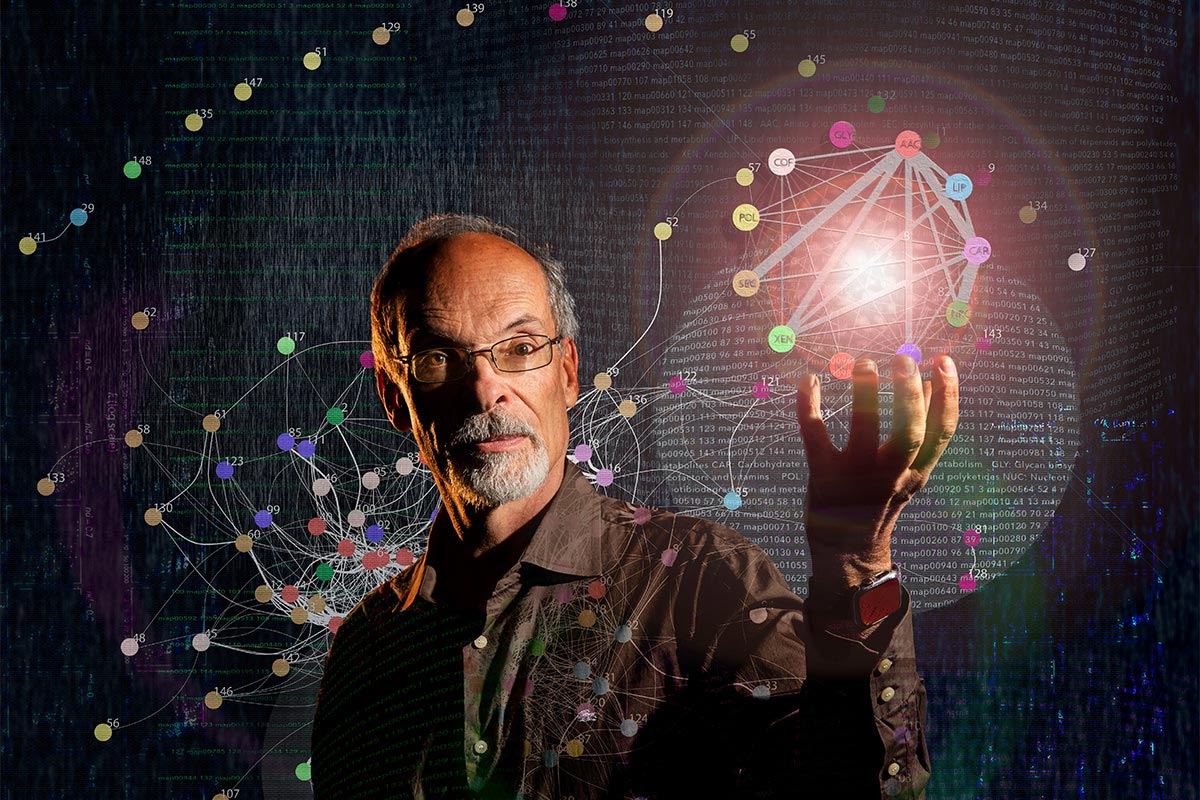Protein “Big Bang” Reveals Molecular Makeup for Medicine and Bioengineering Applications
0 View
Share this Video
- Publish Date:
- 2 July, 2021
- Category:
- Covid
- Video License
- Standard License
- Imported From:
- Youtube
Tags

By University of Illinois College of Agricultural, Consumer and Environmental Sciences, Jul 2, 2021
Research by Gustavo Caetano-Anollés and Fayez Aziz, University of Illinois, reveals a “big bang” during the evolution of protein subunits known as domains. The team looked for protein relationships and domain recruitment in proteins over 3.8 billion years across all taxonomic units. Their results may have implications for vaccine development and disease management. Credit: Fred Zwicky, University of Illinois
Proteins have been quietly taking over our lives since the start of the COVID-19 pandemic. We lived on the whim of the virus’s so-called “spike” protein, which has been mutated dozens of times to create increasingly deadly variants. But the truth is that we have always been ruled by proteins. At the cellular level, they are responsible for pretty much everything.
Proteins are so basic that DNA — the genetic material that makes each of us unique — is essentially just a long series of protein blueprints. This applies to animals, plants, fungi, bacteria, archaea and even viruses. And just as those groups of organisms evolve and change over time, so do proteins and their component parts.
A new study from University of Illinois researchers, published in Scientific Reports, maps the evolutionary history and interrelationships of protein domains, the subunits of protein molecules, over 3.8 billion years.
“Knowing how and why domains combine in proteins during evolution could help scientists understand and develop protein activity for applications in medicine and bioengineering. For example, these insights could lead to disease management, such as making better vaccines from the spike protein of COVID-19 viruses,” said Gustavo Caetano-Anollés, professor in the Department of Crop Sciences, affiliate of the Carl R. Woese Institute for Genomic Biology in Illinois, and senior author on the paper.
Caetano-Anollés has studied the evolution of COVID mutations since the early stages of the pandemic, but that timeline represents a vanishingly small portion of what he and PhD student Fayez Aziz have done in their current research.
The researchers put together sequences and structures of millions of protein sequences encoded in hundreds of genomes across all taxonomic groups, including higher organisms and microbes. They did not focus on whole proteins, but on structural domains.
“Most proteins are made of more than one domain. These are compact structural units, or modules, that house specialized functions,” says Caetano-Anollés. “More importantly, it’s the units of evolution.”
After sorting proteins into domains to build evolutionary trees, they set out to build a network to understand how domains evolved and shared by proteins over billions of years of evolution.
“We built a time series of networks describing how domains have accumulated and how proteins have rearranged their domains through evolution. This is the first time such a network of ‘domain organization’ has been studied as an evolutionary chronology,” says Fayez Aziz. “Our research revealed that there is a vast evolving network describing how domains combine with each other in proteins.”
Each link of the network represents a moment when a particular domain was recruited into a protein, usually to perform a new function.
“This fact alone strongly suggests that domain acquisition is a powerful force,” says Fayez Aziz. The chronology also revealed which domains contributed important protein functions. For example, the researchers were able to trace the origin of domains responsible for environmental perception, as well as secondary metabolites, or toxins used in the defenses of bacteria and plants.
The analysis showed that domains began to combine early in protein evolution, but there were also periods of explosive network growth. For example, the researchers describe a “big bang” of domain combinations 1.5 billion years ago, which coincided with the emergence of multicellular organisms and eukaryotes, organisms with membrane-bound nuclei to which humans belong.
The existence of biological big bang is not new. Caetano-Anollés’s team previously reported the massive and early origins of metabolism, and they recently found it again when tracking the history of metabolic networks.
The historical record of a big bang describing the evolutionary patchwork of proteins provides new tools for understanding protein composition.
“This could, for example, help identify why structural variations and genomic recombinations are common in SARS-CoV-2,” says Caetano-Anollés.
He adds that this new way of understanding proteins could help prevent pandemics by dissecting how viral diseases arise. It may also help reduce disease by improving vaccine design when outbreaks occur.
Reference: “Evolution of Protein Domain Organization Networks” by M. Fayez Aziz and Gustavo Caetano-Anollés, June 8, 2021, Scientific Reports.
DOI: 10.1038/s41598-021-90498-8
The work was supported by the National Science Foundation and the United States Department of Agriculture.
The Department of Crop Sciences is affiliated with the College of Agricultural, Consumer and Environmental Sciences at the University of Illinois.










